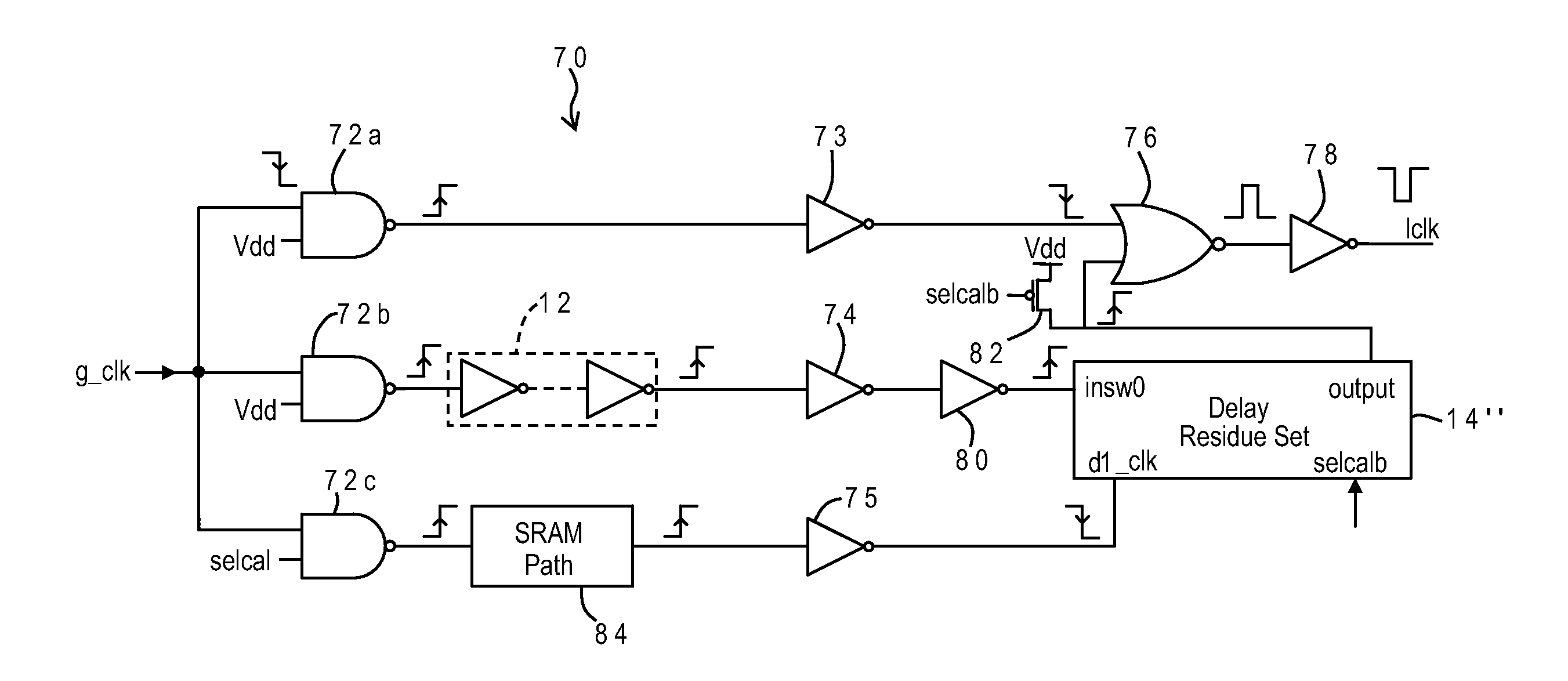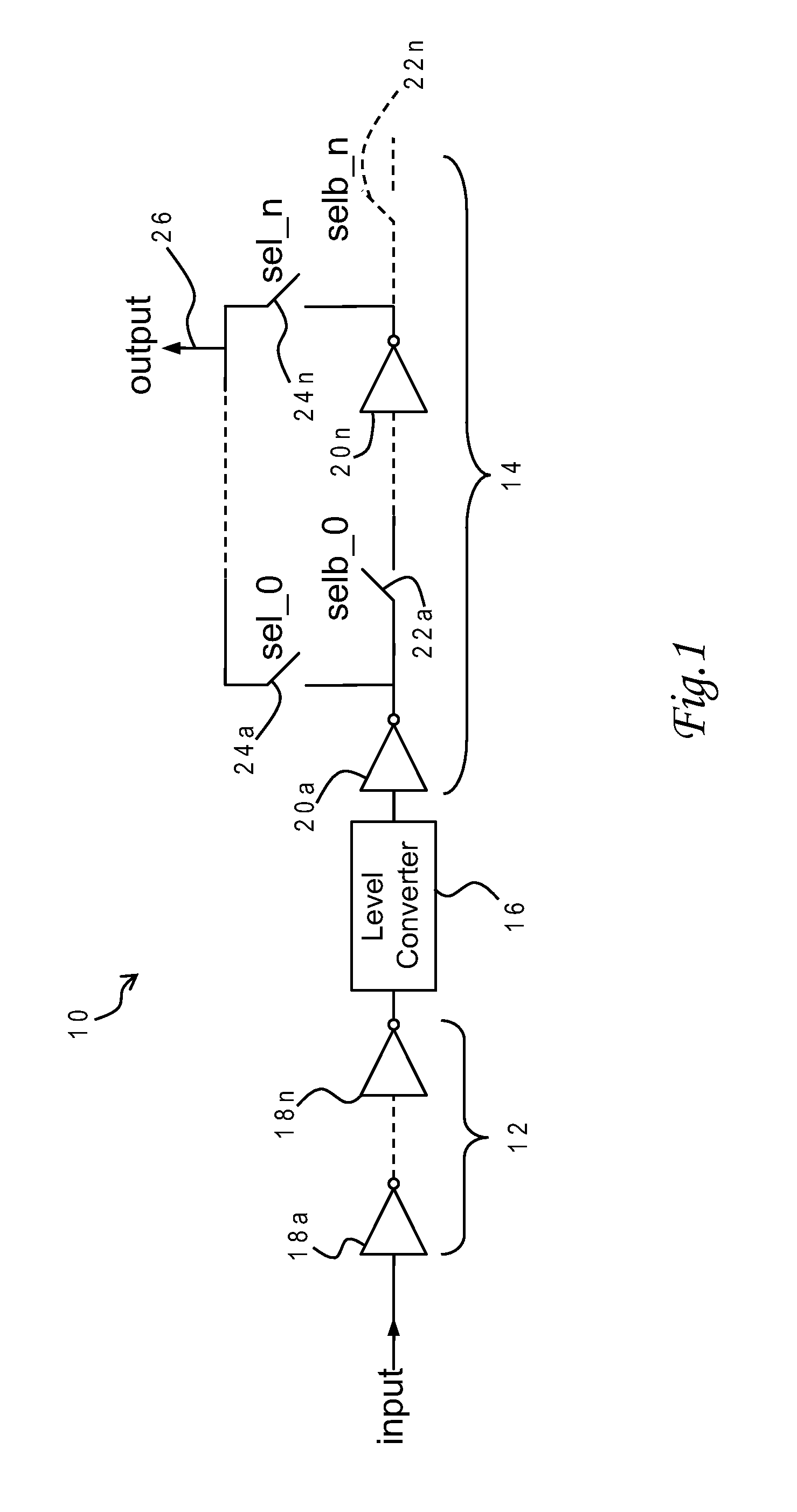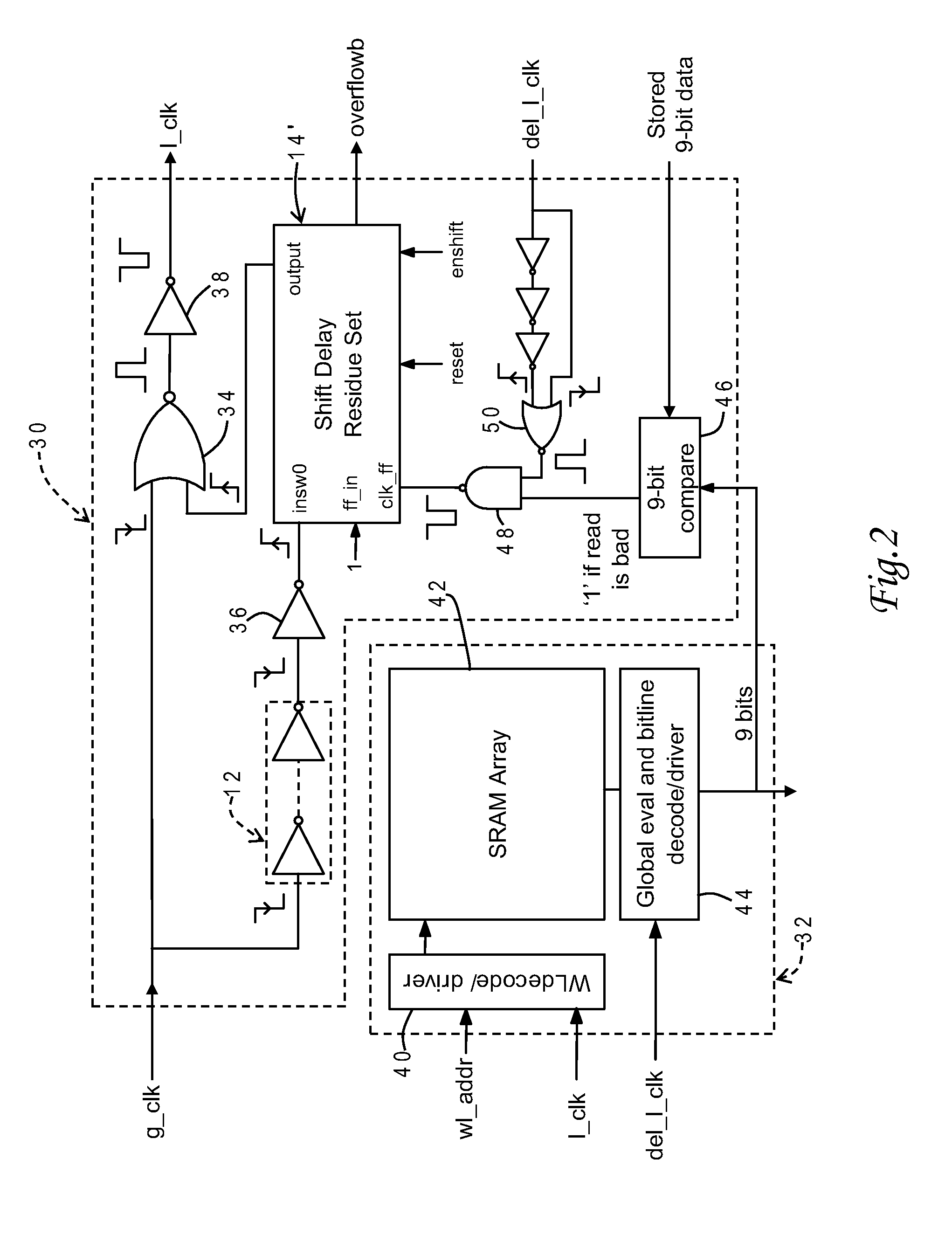Optimizing Sram Performance over Extended Voltage or Process Range Using Self-Timed Calibration of Local Clock Generator
a local clock generator and voltage or process range technology, applied in the field of clock or timing circuits, can solve the problems of increasing the prevalence of low power circuits, large number of cells, and complicated connections between cells, and achieve the effect of improving the clock generation circui
- Summary
- Abstract
- Description
- Claims
- Application Information
AI Technical Summary
Benefits of technology
Problems solved by technology
Method used
Image
Examples
Embodiment Construction
)
[0028]The present invention is directed to improved methods and integrated circuit structures for generating timing or clock signals. In particular the invention is applicable to timing control for circuit components which use local clock signals and a delayed clock signal, such as a static, random-access memory (SRAM) array. The invention provides precise adjustment of the delayed clock signal to optimize SRAM performance over an extended range of operational, process or environmental parameters.
[0029]With reference now to the figures, and in particular with reference to FIG. 1, there is depicted one embodiment 10 of a delay circuit constructed in accordance with the present invention. Delay circuit 10 is generally comprised of an inverter chain 12 having a fixed length, a linear programmable delay residue 14 whose delay is selectively adjusted, and a level converter 16 interconnecting fixed inverter chain 12 to linear programmable delay residue 14. Inverter chain 12 includes a fi...
PUM
 Login to View More
Login to View More Abstract
Description
Claims
Application Information
 Login to View More
Login to View More - R&D
- Intellectual Property
- Life Sciences
- Materials
- Tech Scout
- Unparalleled Data Quality
- Higher Quality Content
- 60% Fewer Hallucinations
Browse by: Latest US Patents, China's latest patents, Technical Efficacy Thesaurus, Application Domain, Technology Topic, Popular Technical Reports.
© 2025 PatSnap. All rights reserved.Legal|Privacy policy|Modern Slavery Act Transparency Statement|Sitemap|About US| Contact US: help@patsnap.com



